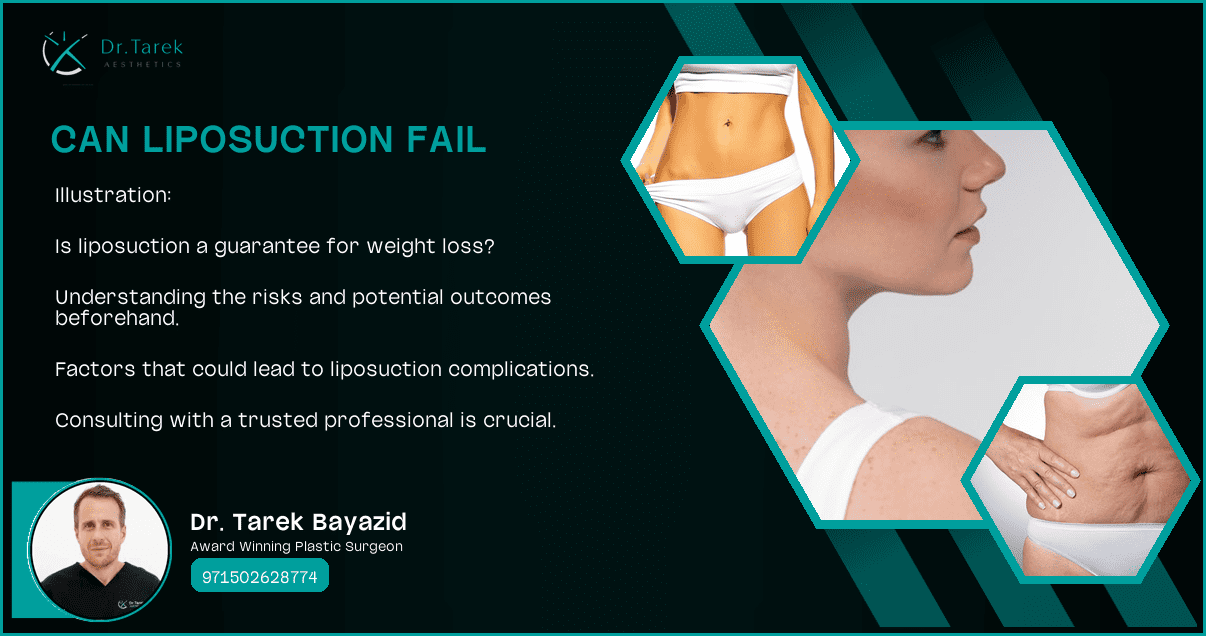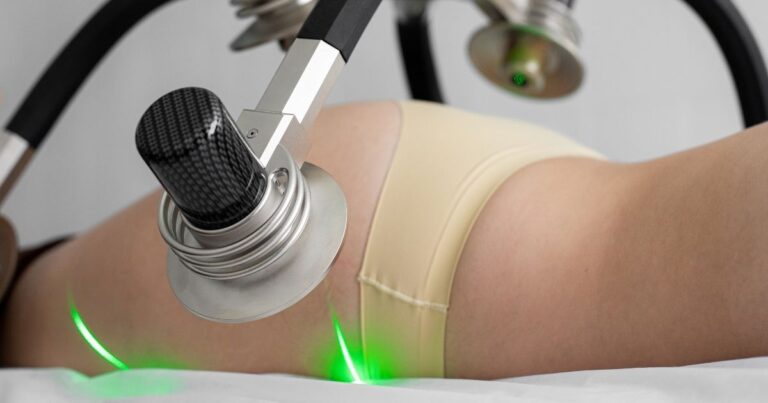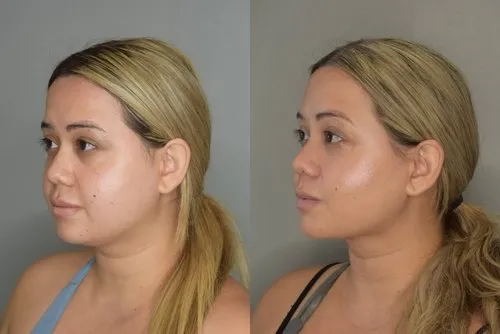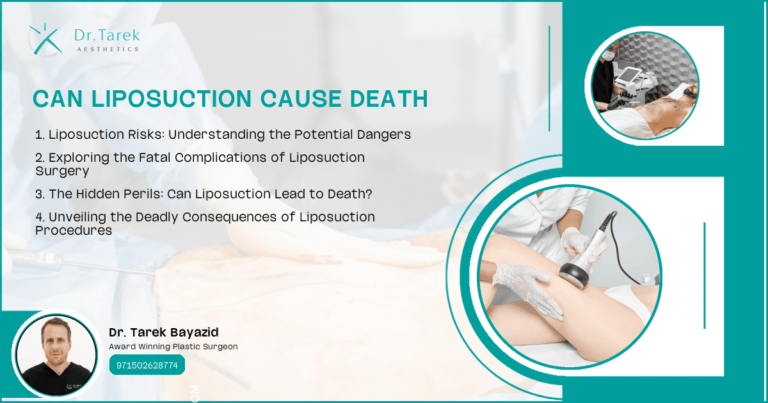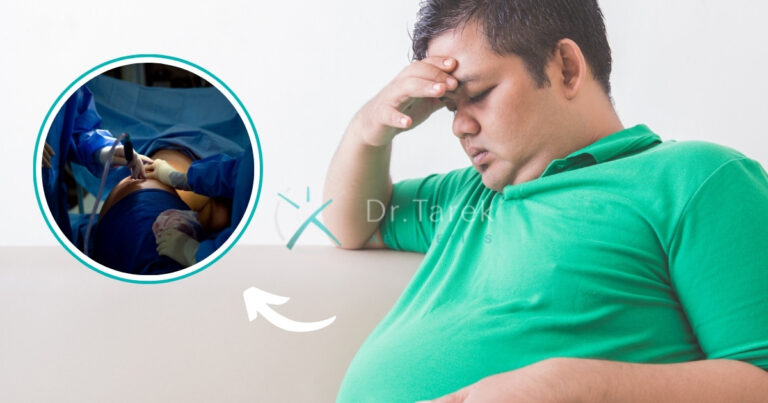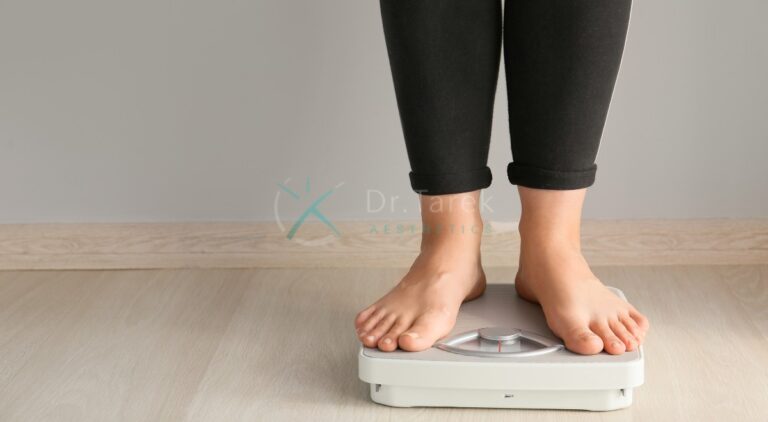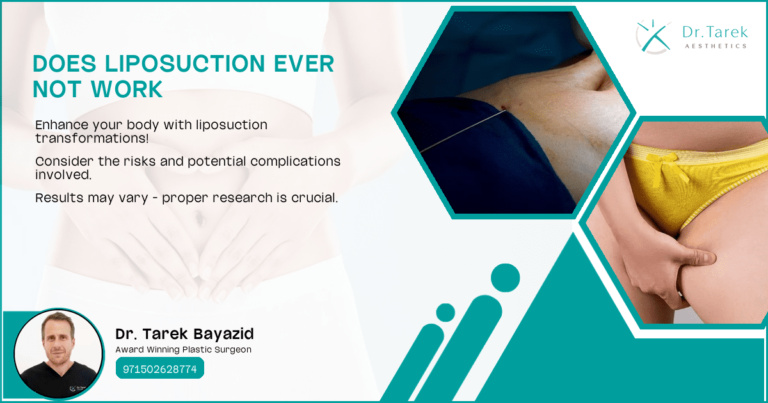Liposuction is a widely sought-after cosmetic procedure for effectively removing excess fat and sculpting the body to achieve desired contours. When performed by a skilled and experienced professional like Dr. Tarek Bayazid, the risks associated with liposuction are significantly minimized, allowing for safe and successful outcomes. With the right expertise, patients can feel confident about achieving their aesthetic goals, knowing they’re in capable hands.
Can Liposuction Fail to Deliver Expected Results?
Liposuction can sometimes fail to meet the expectations of patients. This can occur due to various factors, including unrealistic expectations or technical issues during the procedure. It’s important to have a clear understanding of what liposuction can and cannot achieve.
Liposuction Hd Enhancement is a special way to remove extra fat from the body it helps create a more defined and sculpted look especially around muscles
Factors Contributing to Unsuccessful Liposuction
Several factors can contribute to unsuccessful liposuction outcomes. These include the skill and experience of the surgeon, the patient’s health and skin elasticity, and the amount of fat being removed. Each of these factors plays a significant role in the success of the procedure.
- Surgeon’s Expertise : The skill level of the surgeon is crucial. An experienced surgeon is more likely to deliver satisfactory results.
- Patient’s Health : Overall health and skin elasticity can affect healing and the final appearance.
- Amount of Fat Removed : Removing too much or too little fat can lead to unsatisfactory results.
Common Signs of Suboptimal Liposuction Outcomes
Suboptimal outcomes can manifest in various ways. Patients may notice uneven contours, excessive scarring, or asymmetry. These signs indicate that the procedure did not go as planned and may require further intervention.
Book A Consultation With Dr Tarek Bayazid
Top-rated Plastic Surgeon For Liposuction in Dubai
Installment Plan Available
- Uneven Contours : Irregularities in the skin surface can occur if fat is not removed evenly.
- Excessive Scarring : Poor healing or surgical technique can lead to noticeable scars.
- Asymmetry : Uneven fat removal can result in one side of the body looking different from the other.
Unfavorable Outcomes of Liposuction
While liposuction is generally safe, there are potential unfavorable outcomes that patients should be aware of. These can be categorized into local and systemic complications.
Systemic Complications
Systemic complications are less common but can be more serious. These include blood clots, fat embolism, and adverse reactions to anesthesia. It’s important to discuss these risks with your surgeon before the procedure.
- Blood Clots : These can form in the legs and travel to the lungs, causing serious complications.
- Fat Embolism : Fat particles can enter the bloodstream and cause blockages.
- Anesthesia Reactions : Some patients may have adverse reactions to anesthesia.
Liposuction Revision Procedures
In cases where liposuction does not yield the desired results, revision procedures may be necessary. These procedures aim to correct any issues and improve the overall outcome.
When to Consider Secondary Surgery
Secondary surgery may be considered if the initial results are unsatisfactory or if complications arise. It’s important to wait until the body has fully healed before undergoing another procedure.
- Unsatisfactory Results : If the initial results do not meet expectations, revision surgery may be needed.
- Complications : Issues such as infection or asymmetry may require additional surgery.
- Healing Time : Allow adequate time for healing before considering revision.
Techniques for Correcting Failed Liposuction
There are various techniques available for correcting failed liposuction. These include fat grafting, additional liposuction, and skin tightening procedures. The choice of technique depends on the specific issues being addressed.
- Fat Grafting : This involves transferring fat from one area to another to improve contours.
- Additional Liposuction : Further fat removal may be necessary to achieve the desired results.
- Skin Tightening : Procedures like laser therapy can help tighten loose skin.
Preventing Liposuction Failure
Preventing liposuction failure starts with choosing the right surgeon and setting realistic expectations. These steps can significantly increase the likelihood of a successful outcome.
Choosing a Qualified Surgeon
Selecting a qualified and experienced surgeon is one of the most important steps in preventing liposuction failure. Look for board-certified surgeons with a proven track record in liposuction procedures.
- Board Certification : Ensure the surgeon is certified by a recognized board.
- Experience : Choose a surgeon with extensive experience in liposuction.
- Patient Reviews : Read reviews and testimonials from previous patients.
Setting Realistic Expectations
Having realistic expectations is crucial for satisfaction with the results. Understand that liposuction is not a weight-loss solution but a body contouring procedure.
- Understand Limitations : Know what liposuction can and cannot achieve.
- Discuss Goals : Clearly communicate your goals with your surgeon.
- Be Patient : Results may take time to fully develop.
Recovery and Results After Liposuction
The recovery process is an essential part of achieving optimal results from liposuction. Proper care and patience are key to a successful outcome.
Post-Operative Care for Optimal Outcomes
Following your surgeon’s post-operative care instructions is crucial for a smooth recovery. This includes wearing compression garments, avoiding strenuous activities, and attending follow-up appointments.
- Compression Garments : These help reduce swelling and support healing.
- Activity Restrictions : Avoid heavy lifting and strenuous exercise during recovery.
- Follow-Up Appointments : Regular check-ups ensure proper healing.
Timeline for Visible Results
Visible results from liposuction may take several weeks to months to fully develop. Swelling and bruising will gradually subside, revealing the final contours.
- Initial Swelling : Expect some swelling immediately after the procedure.
- Gradual Improvement : Results will improve as swelling decreases.
- Final Results : Full results may take up to six months to appear.
Maintaining Liposuction Results Long-Term
Maintaining the results of liposuction requires a commitment to a healthy lifestyle. This includes regular exercise and a balanced diet to prevent weight gain.
Lifestyle Changes to Preserve Your New Contours
Adopting healthy habits is essential for preserving the results of liposuction. This includes maintaining a stable weight and staying active.
- Regular Exercise : Engage in regular physical activity to maintain your new shape.
- Healthy Diet : Follow a balanced diet to prevent weight gain.
- Weight Management : Monitor your weight to avoid fluctuations.
Risks and Complications of Liposuction
Understanding the risks and complications associated with liposuction is crucial for making an informed decision. While the procedure is generally safe, there are potential side effects to consider.
Understanding Potential Side Effects
Potential side effects of liposuction include swelling, bruising, and changes in skin sensation. These are typically temporary and resolve with proper care.
- Swelling : Common after surgery and usually subsides over time.
- Bruising : May occur but typically fades within a few weeks.
- Skin Sensation : Temporary numbness or tingling is possible.
Statistics on Liposuction Complications
According to the American Society of Plastic Surgeons, liposuction complications are relatively rare. However, it’s important to be aware of the potential risks and discuss them with your surgeon.
Complication | Frequency |
Infection | Rare |
Blood Clots | Very Rare |
Fat Embolism | Extremely Rare |
Alternative Fat Reduction Treatments
For those seeking non-surgical options, there are alternative fat reduction treatments available. These can provide body contouring benefits without the need for surgery.
Non-Surgical Options for Body Contouring
Non-surgical body contouring options include treatments like CoolSculpting, laser therapy, and ultrasound fat reduction. These methods can help reduce fat in targeted areas with minimal downtime.
- CoolSculpting : Uses cold temperatures to freeze and eliminate fat cells.
- Laser Therapy : Targets fat cells with laser energy to reduce their size.
- Ultrasound Fat Reduction : Uses sound waves to break down fat cells.
FAQ’s
How Can I Avoid Failed Liposuction?
To avoid failed liposuction, choose a qualified surgeon and set realistic expectations. Proper pre-operative planning and post-operative care are also essential. Discuss your goals and concerns with your surgeon to ensure a clear understanding of the procedure and its potential outcomes.
What Are the Signs of Bad Liposuction?
Signs of bad liposuction can include uneven skin texture, excessive scarring, and asymmetry. These issues may arise from poor surgical technique or complications during recovery. If you notice any of these signs, consult with your surgeon to discuss potential corrective measures.
Can Liposuction Fail to Remove Fat?
Liposuction can fail to remove fat if the procedure is not performed correctly or if the patient’s body does not respond as expected. Factors such as the surgeon’s technique and the patient’s unique anatomy can influence the outcome. It’s important to have a thorough consultation with a qualified surgeon to discuss potential risks and outcomes.
